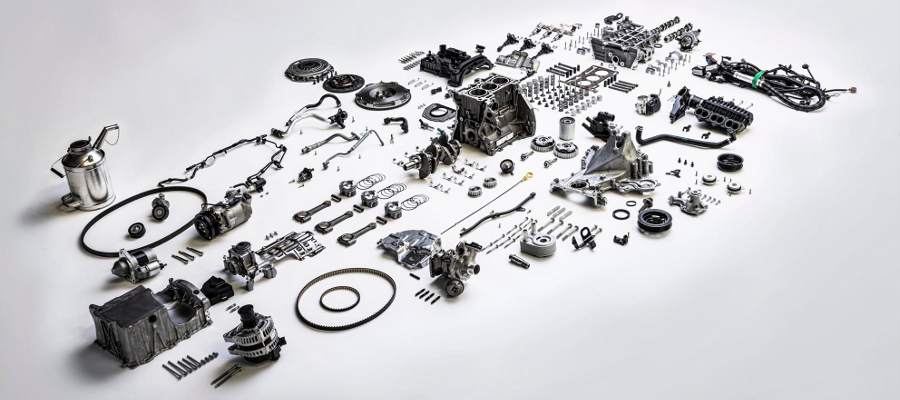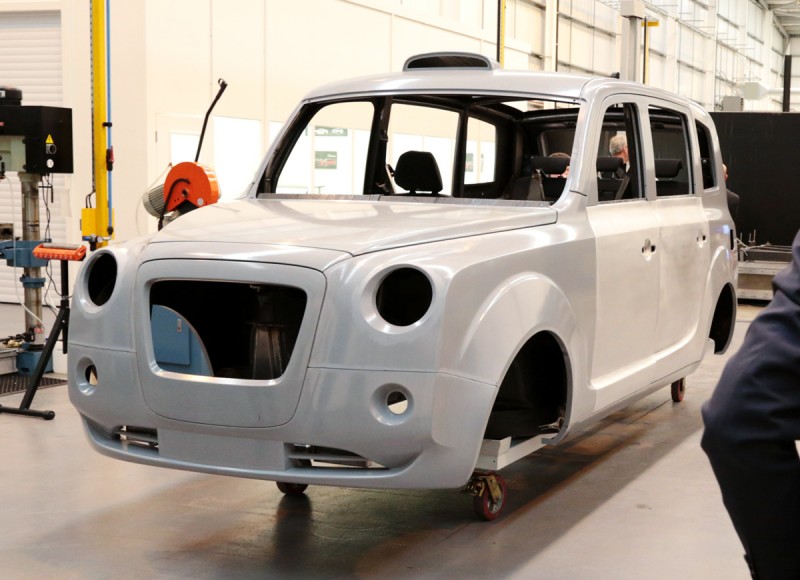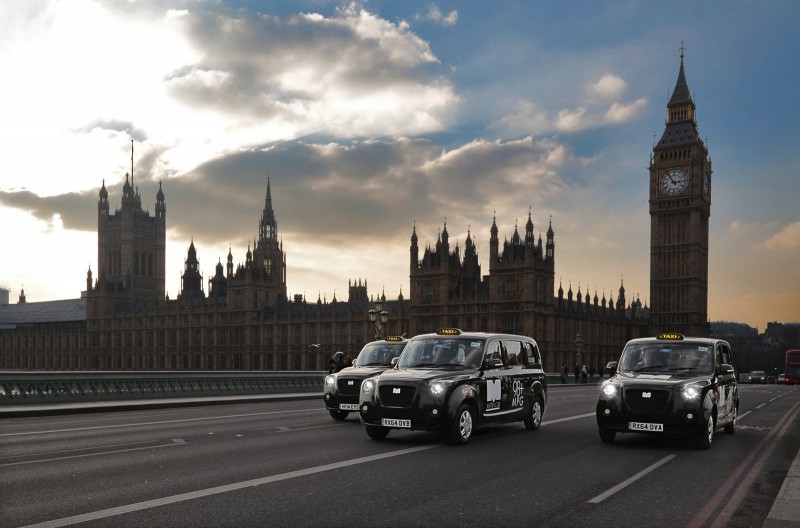
TeslaClubSweden: Having heard so much good about petrol cars, we decided to test drive one. They are said to combine cheap price with long range and fast charging. A winning formula on paper – but how are they in real life?
We sat us in the loaner car at the car salesman’s office. Automakers do not sell the cars themselves, only through independent car repair shops as middlemen. It may sound like a bad omen to buy the car from a car repair shop that you want to visit as seldom as possible. But you apparently can’t buy the car directly from the manufacturer but must go through such intermediaries. The seller was very ”pushy” and tried to convince us to buy the car very forcibly, but the experience is perhaps better elsewhere.
So we sat in the car and pressed the START button. The car’s gasoline engine coughed to life and started to operate. One could hear the engine’s sound and the car’s whole body vibrated as if something was broken, but the seller assured us that everything was as it should. The car actually has an electric motor and a microscopically small battery, but they are only used to start the petrol engine – the electric motor does not drive the wheels. The petrol engine then uses a tank full of gasoline, a fossil liquid, to propel the car by exploding small drops of it. It is apparently the small explosions that you hear and feel when the engine is running.
The petrol engine consists of literally hundreds of moving parts that must have tolerance of hundredths of a millimeter to function. We begun to understand why it is car repair shops that sell the cars – they might hope for something to break in the car that they can mend?
We put in a gear and drove away with a jerk. The jerk came not from any extreme acceleration, but gasoline engines apparently cannot be driven as smoothly as electric motors. The acceleration did not occur at all, because we could not get the car to go faster than 40 km/h! By then the petrol engine literally howled and the whole car shook violently. Convinced that something must have broken we stopped the car. The seller then explained that with petrol engines you need to ”change gears” on a regular basis. Between the engine and the wheels are not a fixed ratio gear, but a variable one. The petrol engine can produce power only in a limited speed range, and must therefore be geared with different ratios in order to continue to accelerate. There are 5 different gears we can select with increasing speed as result. It is -as we learned quickly- very important that each time select a suitable gear otherwise the engine will either stop or get seriously damaged! You need a lot of training to learn to select the right gear at the right time – though there are also models with automatic transmissions that can do this themselves. In the manual transmission car, we needed to constantly guard the engine from damaging it. Very stressful.
We asked if the constant sound of the engine -that frankly disturbed us from being able to listen to the radio- could be turned off. But it couldn’t. Very distracting.
After getting the car up to speed through intricate changing of gears we approached a traffic light. Releasing the accelerator pedal resulted in no significant braking, we had to use the brake pedal very much to slow down the car. We were surprised to hear the brakes are completely mechanical! The only thing they generate is heat – braking gives no regeneration of gasoline back into the tank! Sounds like a huge waste, but it would soon get even worse.
When we came to a stop the engine continued to run and the car vibrate – even though the car was standing still! The engine continued to burn gasoline without moving the car forward. Can it really be true? Yes, the seller explained, it is so with gasoline cars: the engine is always running and burning gasoline – even when the car is stationary. Some models however switches off the engine at a red light, he explained. Well that certainly makes more sense.
After a while we came to a gas station where we could charge the car. The car claimed that it still had half a tank left, but we wanted to try the famous super-fast charging of petrol cars!
So we drove to the gas station and opened the fuel cap. The filling nozzle is very similar to a charging connector, but it is not electrons that come out of it but gasoline. Gasoline is a highly carcinogenic, smelly and flammable liquid derived from plants and animals extinct since millions of years ago. The gasoline is pumped to a tank in the car, which then drives around with about 50 liters of this hazardous liquid in it.
We put the nozzle to the car, but nothing happened. The seller then explained that we must pay to fuel! Much like those extremely expensive fast chargers some electric utility companies have set up. After we put the credit card in the reader we could start fueling. It was extremely fast! In just two minutes we filled the gas tank to the max! But there were two counters on the pump: one that showed the number of liters we have fueled and one that showed how much it would cost us. And that counter was spinning so fast that we could hardly keep up with its pace! Sure we filled the tank full in two minutes, but it did cost us an unbelievable €30! A full charge would thus cost us double that – a whopping €60! We cursed our luck that we apparently have chosen one of the most expensive gas stations, and began to ask the seller what other alternatives are there? How much does it cost to fill up at home, and how many free stations are there?
The seller looked very puzzled at us and explained that it is not possible to refuel gasoline cars at home, and there are no free gas stations. We tried to explain our questions, in case he had misunderstood, but he insisted that you can not. Apparently youhave to several times a month drive to the gas station to recharge your petrol car at extortionate prices – there are no alternatives! We thought it was very strange that no gasoline car manufacturers have launched their own free gas stations?
There are no gas stations either where you can fill up more slowly at a cheaper price. We started calculating price versus consumption and came to the shocking conclusion that a petrol car costs unimaginable €12 per 100km! Sure, electric cars could also theoretically come up to these amounts if they quick charged at one of the most expensive charging stations in the country – but for petrol cars there are no cheaper alternatives! While electric cars are comfortably charged at home every night for €2 per 100km petrol cars must make detours several times a month to fill up at these extortionate rates – without exception! Monthly cost for a petrol car can -just for the gasoline alone- easily exceed one hundred Euros! We begun to understand why they are so cheap to purchase – operating them is extremely expensive instead.
We also begun to understand why there must be so many petrol stations everywhere, if all petrol cars always have to drive to them to refuel. Imagine if you could charge your electric car only at the power companies’ most expensive fast chargers – and nowhere else!
With this in mind we ended up in a traffic jam and was horrified that the gasoline engine continued to burn these expensive gasoline drops even when the car was standing still or moving very little. With gasoline vehicles it is easy to run into cost anxiety – the feeling that the car literally burns up your money! No cheap home charging and no regeneration of gasoline back to the fuel tank when braking sounds like economic madness – especially given that all gasoline must be imported from abroad.
We returned the car to the dealer’s premises, pulled the handbrake and step out of the car. The petrol engine continued to run! Apparently one must manually switch off the combustion of the precious liquid. But we wanted to see the petrol engine, so the seller opened the bonnet. The entire front portion of the car was completely cluttered with hoses, fittings, fluid reservoirs, and amid all a huge shaking cast iron block which apparently constituted the motor’s frame. There was no space for luggage in the front of the car! Despite its enormous size, high noise and vibration, the engine barely delivered one hundred horsepower. The engine was also extremely hot, we burned ourselves when we touched it. Even though this was on a warm summer day so the engine did not need to generate heat to the passenger compartment.
We became also worried about what would happen if we crashed with a petrol car? The cast iron block that occupied most of the engine compartment was sitting in the middle of the collision zone! Where would it go if we collided – would we get it in our lap? The salesman assured us that the motor in such case somehow gets folded down under the car but we could not escape the impression that the engine block was very much in the way at the front – the safety beams were built around it, which surely impairs their functionality. Avoiding that one hundred kilo iron lump in the front of the car makes it so much easier to build safe cars. In addition, we have seen on the Internet hundreds of pictures and videos of burning gasoline cars. The petrol tank apparently often leaks after an accident so the flammable liquid pours out and becomes ignited!
From the engine, under the car runs an exhaust system – a kind of chimney for engine exhausts. When you burn the carcinogenic gasoline a lots of noxious gases are produced. The car cleans away the most dangerous gases, but what remains is released into the open air behind the car. It is still unhealthy to breathe in – and smells very bad! And petrol cars are allowed to emit these harmful gases in the middle of our cities? Do not confuse petrol cars’ exhaust pipes with fuel cell cars’ – while hydrogen powered fuel cell vehicles emit only water vapor gasoline cars spew out noxious gasses, and even fossil carbon dioxide that contribute to Earth’s future-catastrophic warming!
We thanked the seller for the display, shook our heads and gave back the ignition key (yes, it’s called that) to him. He realized that there would be no business for him so except for one lame attempt he did not try to sell us the car any more.
On the way home in our electric car we looked with completely different eyes at our poor fellow commuters, who still had to put up with their gasoline cars. But soon it will be their turn to trade up, too!



































